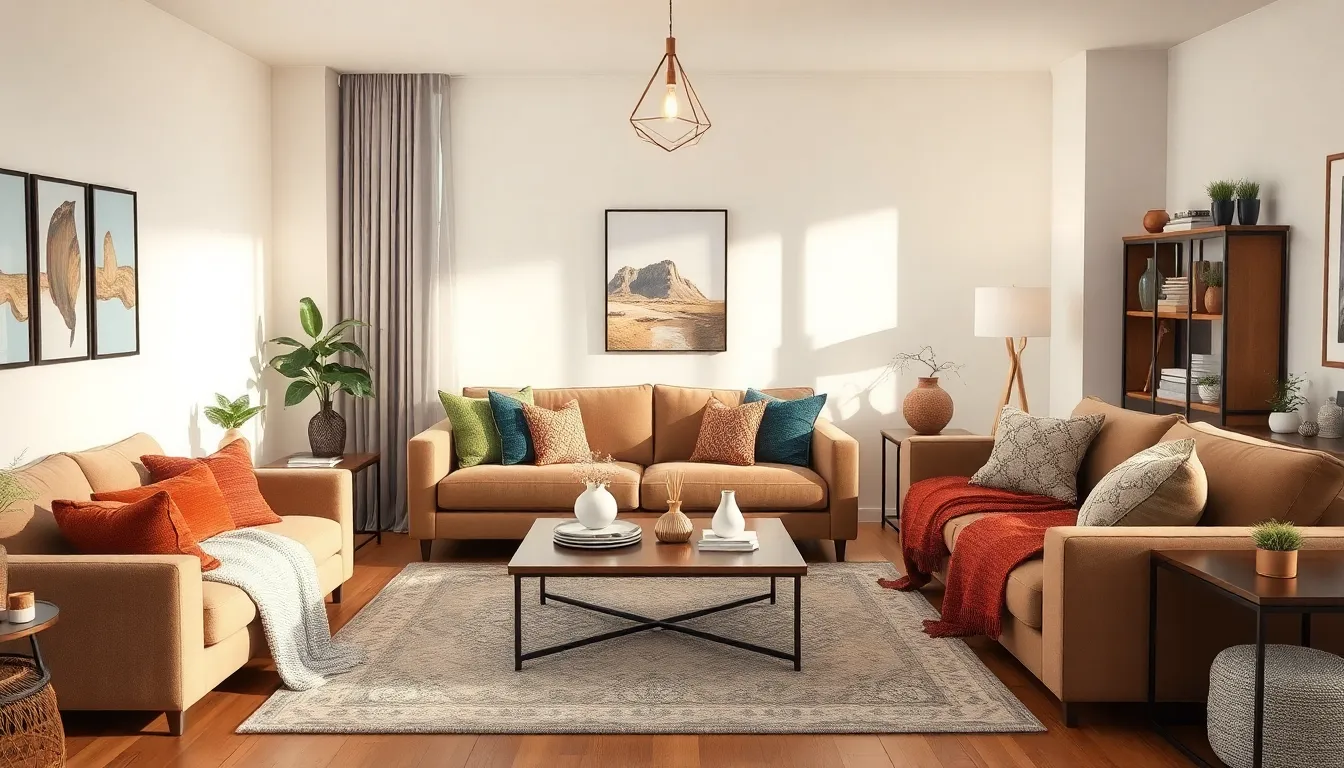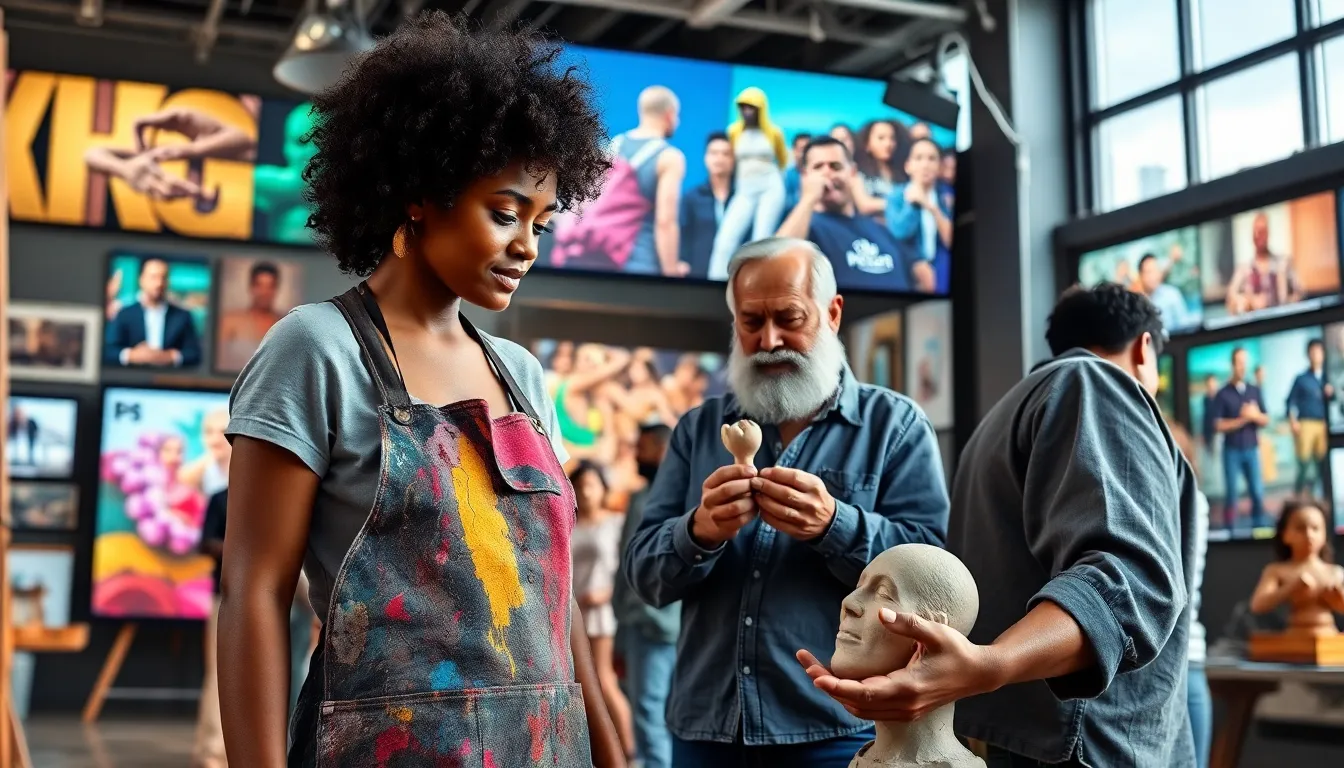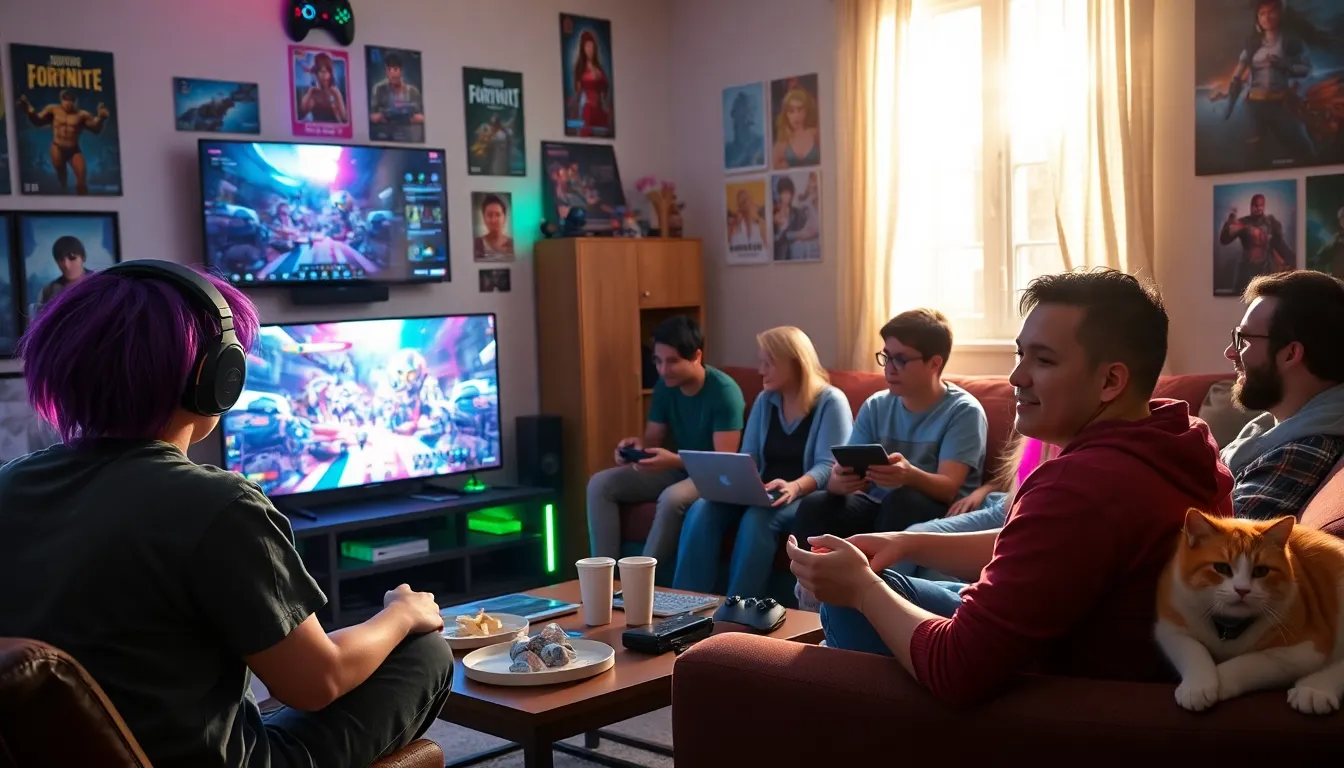Table of Contents
ToggleTransforming a space from drab to fab might sound like a magic trick, but it’s all about the art of interior styling. Whether it’s a cozy apartment or a sprawling mansion, the right styling can turn any room into a sanctuary. Imagine walking into a space that feels like a warm hug—now that’s the power of good design!
But let’s face it, not everyone has the eye of a professional stylist. That’s where the fun begins! With a sprinkle of creativity and a dash of humor, anyone can learn the secrets to making their home look like it jumped straight out of a magazine. So grab your favorite throw pillow and get ready to dive into the world of interior styling, where every corner can tell a story, and every detail makes a difference.
Understanding Interior Styling
Interior styling involves enhancing a space’s appearance and atmosphere through design choices. This process balances aesthetics and functionality, enabling individuals to create environments that reflect their personal tastes.
Importance of Interior Styling
Interior styling plays a significant role in establishing a home’s identity. It enhances comfort, creating inviting spaces where people feel at ease. A well-styled room can increase property value; studies indicate that effective styling may yield a return on investment of up to 10%. Moreover, stylized interiors improve mood and productivity, as visually pleasing spaces foster creativity and well-being.
Elements of Interior Styling
Key elements define interior styling, shaping the overall aesthetic. Color palettes set the tone and evoke emotions, influencing how spaces feel. Furniture selection impacts functionality; it requires balance between comfort and visual appeal. Accessories like artwork and textiles add personality, creating focal points in rooms. Lighting design contributes ambiance; the right fixtures enhance both beauty and practicality, making spaces more inviting.
Key Principles of Interior Styling

Interior styling revolves around certain principles that guide effective design decisions. Mastering these concepts creates harmonious and inviting spaces.
Balance and Proportion
Balance in interior styling ensures that each element within a room feels appropriately weighted. Achieving equilibrium among various pieces involves distributing visual weight, which prevents overcrowding or emptiness. Proportion relates to the size relationships between furniture, decor, and space. Using large furniture in spacious rooms maximizes impact while smaller pieces can complement cozy areas. Applying the rule of thirds can assist in placing decor items to create interest. Adjusting visual weight through layering various materials and textures enhances the sense of balance. Avoiding monochrome setups maintains interest while fostering cohesion throughout the styling process.
Color Schemes and Palettes
Color schemes play a vital role in setting a room’s mood. Selecting a cohesive palette ties elements together, dictating the overall atmosphere. Choosing complementary colors can add vibrancy and life to any space while maintaining harmony. Neutral tones provide versatility, allowing accent colors to shine and create focal points. Pairing warm hues fosters a cozy environment, while cooler shades lend a calming effect. Incorporating textures through different finishes can also enhance color depth. Utilizing the 60-30-10 rule offers a structured approach to color distribution, ensuring balanced and engaging interiors.
Popular Interior Styling Trends
Current interior styling trends reflect diverse tastes and preferences, showcasing various ways to create inviting spaces. These trends prioritize aesthetics without sacrificing functionality.
Minimalist Design
Minimalist design emphasizes simplicity and clean lines. Neutral color palettes dominate, often featuring whites, grays, and natural wood tones. Furniture tends to have sleek profiles, promoting an uncluttered atmosphere. Open spaces create a sense of airiness, allowing natural light to flow freely. Fewer accessories lead to a focus on essential elements, enhancing tranquility. Thoughtfully chosen statement pieces can serve as focal points, adding character without overwhelming the overall design.
Bohemian Flair
Bohemian flair embraces eclectic styles and vibrant colors. Layers of textiles, such as rugs and throw pillows, contribute warmth and comfort. Patterns often clash harmoniously, showcasing individual creativity and personal expression. Indoor plants play a crucial role, bringing a sense of life and nature indoors. Unique accessories, like vintage finds and handcrafted items, add charm and storytelling to spaces. This trend celebrates individuality and encourages self-expression, fostering a relaxed and inviting environment.
Tips for Successful Interior Styling
Successful interior styling combines creativity and thoughtful design. It enhances spaces and reflects personal taste while establishing a welcoming ambiance.
Choosing the Right Accessories
Selecting accessories plays a vital role in achieving a polished look. They enhance the theme of a room and add layers of interest. Consider items like cushions, rugs, and art pieces. Accessories should complement color schemes and furniture styles, enriching the overall aesthetic. Mix textures, like soft throws with sleek vases, to create visual contrast. Balance is essential; too many accessories can clutter a space, detracting from its beauty. Aim for a cohesive look by limiting color palettes to a few harmonious shades.
Incorporating Personal Touches
Incorporating personal touches infuses personality into each space. Unique items, such as family photos or travel souvenirs, tell a story. They foster a sense of identity and comfort. Curate a collection of meaningful pieces that resonate emotionally. Integrating handmade crafts or local art can also enhance authenticity. Create a focal point by displaying these items in a thoughtful arrangement. Balance personal elements with stylish decor to maintain an inviting atmosphere. Ultimately, personal touches elevate interior styling, making spaces warm and relatable.
Embracing interior styling opens up a world of possibilities for creating inviting and personalized spaces. With a thoughtful approach to design elements like color, furniture, and accessories, anyone can transform their home into a sanctuary that reflects their unique style. By understanding key principles and trends, individuals can enhance not only the aesthetic appeal but also the functionality of their environments.
Incorporating personal touches adds warmth and character, making each space truly one-of-a-kind. As they experiment with different styles and arrangements, homeowners will discover that interior styling is not just about aesthetics; it’s about crafting a narrative that resonates with who they are. With creativity and a bit of effort, anyone can achieve a beautifully styled home that feels both comfortable and inviting.







